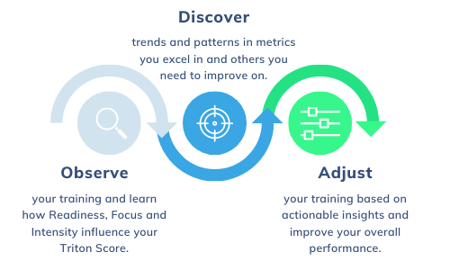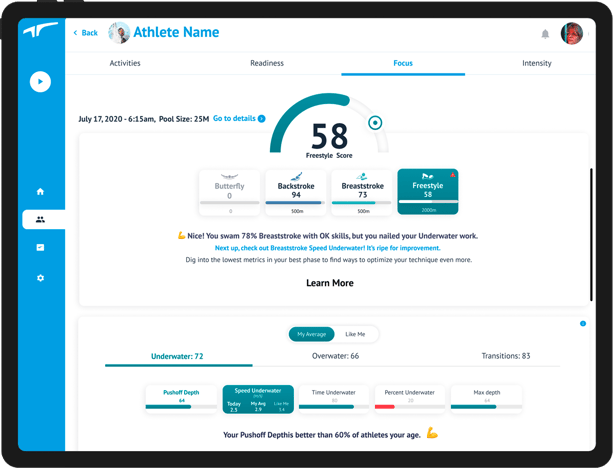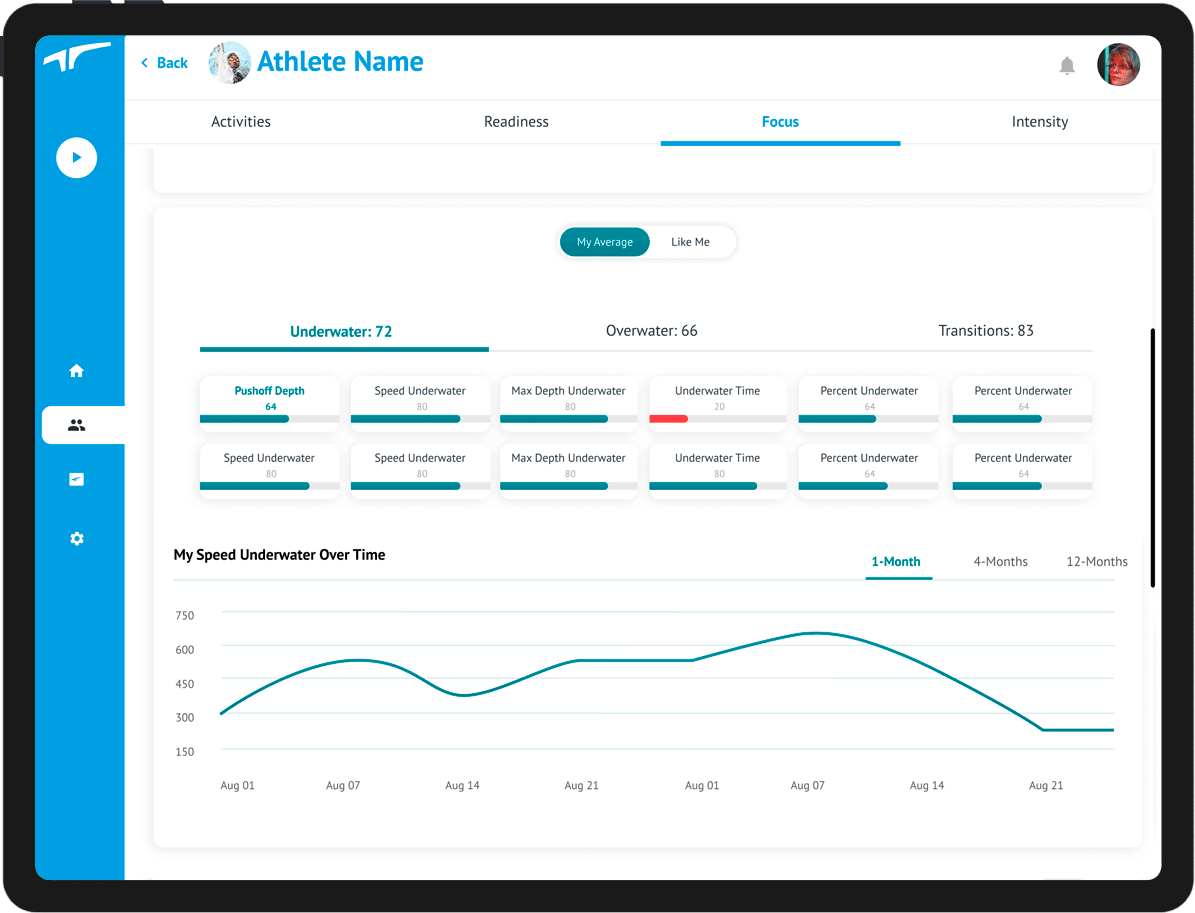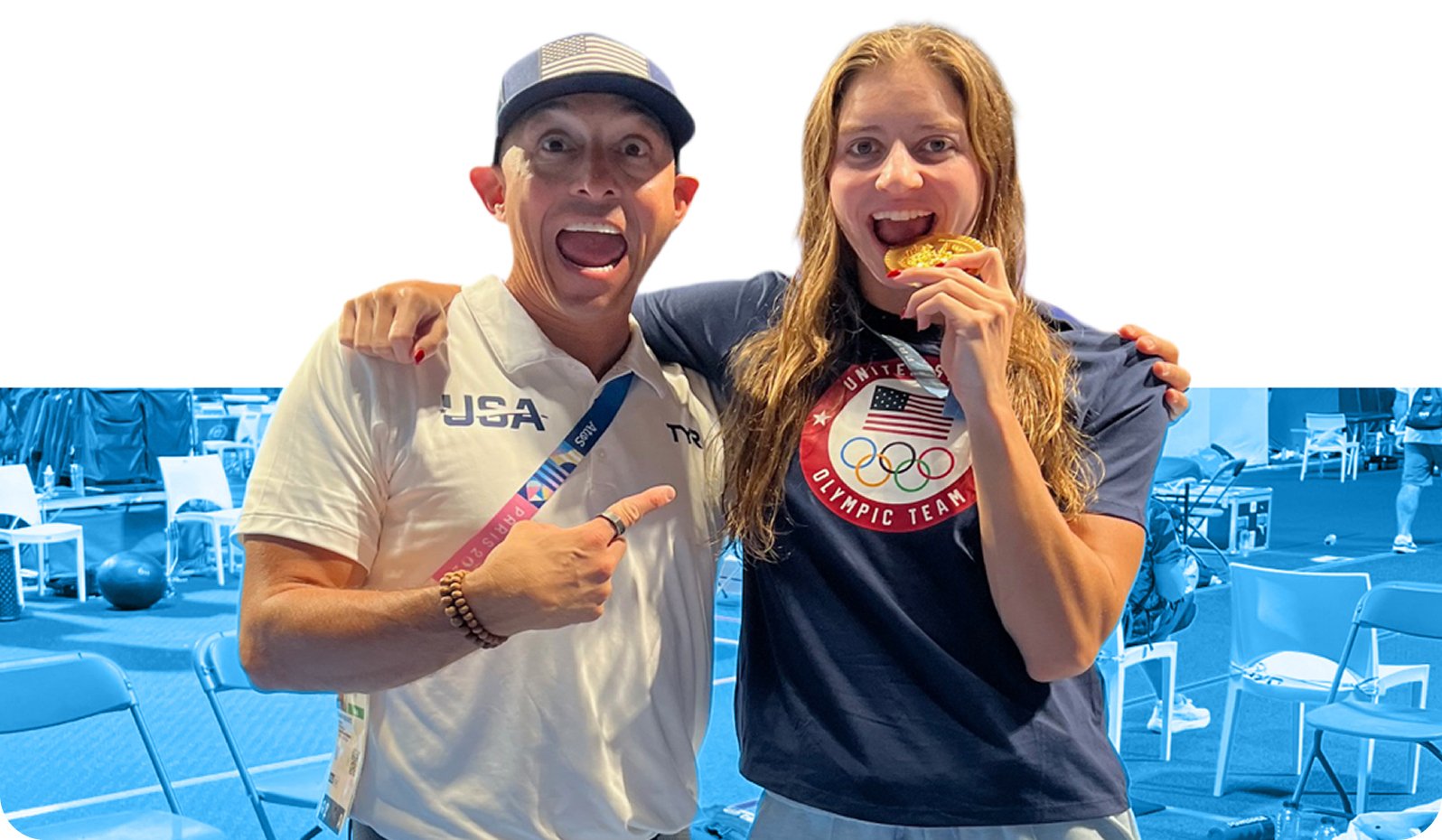We live in the era of athlete data, and undoubtedly critical advancements in technology have made sports around the world better for everyone. Unfortunately, in swimming, although we have been reasonably good at integrating technologies for racing, we are much slower at adapting to new technologies for training. If no one dares to race without a tech suit, why do we train old school?
The reality is that integrating data in training is more complicated than putting a tech swimsuit on. It takes time, effort and much education to shift from traditional to data-driven training.
Sports technologies like TritonWear measure performance and transform how athletes train, compete and manage their careers. The problem now is not the access to data but quite the contrary; it's the explosion of athlete data and not knowing what to do with them.
This article gives you the blueprint to go from being new in utilizing data to being a pro, enabling you to make data-powered changes in your training.

If you're wondering what FIT or Focused Iterative Training is, it is a simple, repeatable process that helps speed up athlete development, and it includes three easy steps you will go through several times:
Every touchpoint below involves going through a FIT cycle each time, learning and understanding more about the relationship between data, training sets and performance.
To help educate coaches and swimmers to interpret data, we have mapped the journey through the first several Focused Iterative Training (FIT) cycles. They encompass all the steps coaches and swimmers we work with have gone through on the path to data-driven training.
Ready to transform your work, acquire new skills and embrace data and technology? Let's do this!
Getting Acquainted (4-6 weeks)
This first FIT cycle is about getting acquainted with your Triton unit, the app, data and scores. It takes a bit longer than future FIT cycles will, taking anywhere from 4-6 weeks to complete. This is because it's the cycle you will spend the most time in learning mode, understanding the intricacies between data and training.
Executing the first round of FIT
- Observe: You will start learning how to nose into the data. The first step is exploring the metrics in live training, then digging into Focus to look at them through a different lens.
TritonWear breaks training down by categorizing metrics for each swimming phase: underwater, overwater and transitions. An excellent exercise is to explore "My Average" and "Like Me" comparisons.
"My Average" scores show how you executed your technical skills today compared to your typical (over the last 30 days), while "Like Me" scores show how your skills compare to other swimmers of the same competing gender, height, & speed.
How do you use these? The easiest way is to start on the Like Me view. Explore how you compare against other athletes like you for each skill. Find the Input Metrics with the lowest scores. These will be the lowest-hanging fruits, so your best bet for the first ones to go after.
Then look at your metrics under ''My Average'' for each stroke and swim phase to know how each metric reacts to changes in how you train.
- Discover: Next, you will start drawing connections between data and what's happening in the water. For example, after analyzing the "Like Me'' and ''My Average'' scores, you may decide that the first good goal for the overwater metrics is to increase your Stroke Rate for Backstroke.
So you plan your sets around this goal and start noticing the Stroke Rate at each speed and the relationship between Stroke Rate, Distance Per Stroke, Stroke Count and Overwater Speed. Precisely how these metrics influence each other and how to strike a good balance. -
Adjust: You will start questioning and changing your thought process and planning approach.
'' Try to plan this first FIT phase around a meet. The meet will serve as an excellent opportunity to set benchmarks for your data and help give you a starting point. You will also realize the value of training data, how they relate to racing and where you want to go next. ''
Gaining Precision & Confidence (4 weeks)
At the beginning of this second round of iterations, you may feel uncertain about what you know and how you plan training sets to target data during practice. Things may not have clicked for you just yet, but they will. It's essential to stay the course and keep at it. Soon you will feel the ball of data yarn in your mind unravelling and find precision and confidence in what you are doing.
As mentioned earlier, the problem now is not getting access to data but what to do with it. Can you change 20 different things at a time during practice? No! Then how and what can you do to narrow it down?
Executing the second round of FIT
- Observe: The difference between output and input metrics will become ingrained. So during this FIT cycle, the key is to start planning your training around which output metrics you want to improve, then focus on sets that address the input metrics that will help get you there.

- Discover: By the second meet, you will start seeing results delivered in the pool. Coaches we work with reported that their entire team of athletes were far better on their underwater (something they focused on), and swimmers began to understand how their overwaters affect their transitions and their underwaters and vice versa.
- Adjust: By the end of this cycle, you will start seeing a visible change in training effort, and you will start showing up with intention and purpose every day. You will be eager to begin integrating deeper.
Moving From Intuition to Data-Driven (depends on meet opp.)
In this third round of iterations, planning with data will feel like second nature. The most significant transformation here is that you will show up to work with purpose. You will train and be mindful of technique, speed, and efficiency, rather than just hitting pace times.
You will shift from abstract to more concrete, grounded conversations around your skills. You will start feeling confident in your ability to make changes and perform in the pool. You'll be aware that everything is measured, so you'll become more accountable for your performance, which is 60% of the battle.
Executing the third round of FIT
- Observe: To fine-tune your training, you will target different metrics with different sets. One set may target transitions and track Push Max Acceleration, Turn Rate and Distance Underwater. In contrast, another set may target the overwater phase and measure Rep Time, Stroke Index and DPS. By this point, you know and work on the benchmarks for each metric, then check your data during the live workout to ensure you're hitting your goals.
- Discover: After gaining confidence in your ability to interpret Focus scores and adjust skill metrics, you'll start spending more time with Triton Scores, and explore your Readiness and Intensity, to further expand your understanding of how training goes every day.
- Adjust: Last; you will use Readiness to validate that you're maintaining a 10-15% load increase or decrease across your sessions every week, especially while decreasing training volume during tapering. Your Readiness score is invaluable when you are out due to injury or illness, as it guides you on how to return back to regular training safely.
The Triton unit will become part of the daily gear and as mandatory as grabbing your goggles. Wearing the unit for every practice further helps you with load monitoring and data accuracy.
That is the beauty of machine learning; it evolves as you evolve, and the more data it gathers, the more accurate the swimming profile it builds for you. Besides, successful behavioural changes in the water require substantial commitment, time and effort.
To see fundamental changes in your swimming, you'll need to focus on being better every day, not just your best during test sets.




.png)

.png)